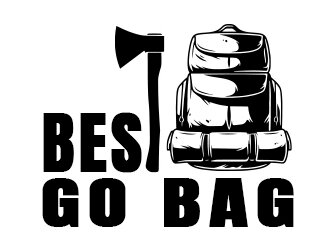<imgsrc=”” alt=””>
We had SARS in 2003, then H1N1 in 2009, then MERS in 2012, and now COVID-19, here in 2020. The truth is that we don’t know when or where, but we know with 100% certainty that another deadly virus will strike.
While the main priority right now must be coping with the growing number of cases and the economic havoc that the current pandemic is wreaking over the nation, it’s also time for the country to begin taking steps to minimize the pain of the next pandemic by preparing for it.
Not sure where to start? Keep reading for our ultimate supply checklist guide for a pandemic.
What Supplies Are Needed To Prepare For A Pandemic?
Before we dive into all the supplies that you should stockpile to prepare for a pandemic, let’s first discuss what a pandemic is.
According to WHO, a pandemic is defined as the “worldwide spread of a new disease.”
When a new disease or virus first emerges, most of us lack the natural immunity to fight it off. This can cause a sudden—and sometimes rapid—spread of the disease between people across communities all around the globe. Without a natural immunity to fight off a virus, many individuals can become ill as it spreads.
The WHO is in charge of announcing the emergence of a new pandemic based on how the spread of the virus fits into the following six phases:
Phase One: Viruses circulating among animal populations haven’t been shown to transmit human beings. They are not considered a threat, and there is very little risk of a pandemic.
Phase Two: A new animal virus circulating among animal populations has been shown to transmit to humans. This new illness is considered a threat and signals the potential risk of a worldwide pandemic.
Phase Three: The animal virus has caused disease in a small cluster of humans through animal-to-human transmission. However, human-to-human transmission is too low to cause community outbreaks. This means that the virus places human beings at risk but is unlikely to cause a pandemic.
Phase Four: There has been human-to-human transmission of the new virus in considerable enough numbers leading to community outbreaks. This kind of transmission among humans signals a high risk of a pandemic developing.
Phase Five: There has been transmission of the new virus in at least two countries within the WHO region. Although only two countries have been affected by the new virus at this point, a global pandemic is inevitable.
Phase Six. There has been transmission of the new disease in at least one additional country within the WHO region. This is known as the ‘pandemic phase’ and signals that a global pandemic is currently occurring.
As you can clearly see listed above, pandemics aren’t necessarily defined by their growth rate but rather by the spread of disease, and the truth is that many of these outbreaks follow a spread pattern described as exponential growth.
With that in mind, you can see why being prepared ahead of time is so important. In a blink of an eye, a virus that was at phase one could easily jump to phase six.
Here is a list of items you should be storing up on now. These items should be purchases in quantities that will last for at least 3 to 6 months, or ideally, up to 12 months. Think of this list as an insurance policy for your family’s future.
Equipment
- Generator
- Water filters purifiers
- Fire extinguishers
- Crank radio
- Flashlights—several good ones—also, a crank flashlight and remember spare bulbs.
- Candles—unscented candles or oil lamps with enough wicks and oil. Unscented tea candles are cheap when you buy them in large quantities and burn for roughly 45 minutes apiece.
- Batteries—every size, especially AA size. You can never have too many batteries!
- Matches
- Portable toilet—this can be the type you get from RV centers or simply a five-gallon bucket with small trash can liners.
- A regular phone with a cord on the handset—not portable/cordless. These phones will work when there is no electricity, but when phone lines are still working. Also, keep in mind that when cell phone lines are down, text messaging may still work!
- Always keep your cars full of gas at all times, and consider getting a siphon pump to be able to get the gas out if you need it.
- Several large buckets (at least 10 gallons) to be used to catch rainwater.
- Water purification tablets
- Two manual can openers
- Duct tape—several rolls
- Firewood, charcoal
- A small wood or charcoal grill
- Several large gallon plastic water barrels with lids.
- A food vacuum, for longer shelf life foods.
- Items for self-protection
Medical Supplies
- Prescription medications—try to store 6 to 12 months’ worth. Call your doctor and explain why you need extra meds on hand.
- Vitamins—very important! Enough multivitamins for one year per person.
- Band airs, wound closure strips, tape, and gauze, ace wraps, Betadine to wash injuries, antibiotic ointment, Tylenol, Ibuprofen, contact lens solution… you get the picture. Load up on everything that you would need.
- Masks—NIOSH N95 Respirator Masks. You should store at least one case per person.
- Latex disposable gloves
- Alcohol-based hand sanitizers
- Buy a detailed first aid book for non-medical personnel.
- First aid kit
Grocery Items
- Clorox Bleach
- Dishwashing detergent, sponges, clothing detergent
- Hand and bath soap
- Tissues, paper towels, and enough toilet paper for a year. Consider buying commercial rolls.
- Garbage bags—all sizes, aluminum foil, and Ziploc bags, all sizes.
- Baby wipes
- Disposable plates and silverware, hot and cold cups
- Scissors and knives.
- Hygiene items—shampoo, toothpaste, shaving items, feminine sanitary products, dental floss, nail clippers, etc.
- Baby supplies (if needed)
- Large plastic containers that are durable and seal well to store things like sugar, flour, etc.
- Rubber gloves that can be easily cleaned with bleach and reused.
- Water containers—very important must be food grade approved.
- Pet supplies
- Coffee filters—these are great to filter out water before purifying it.
- Vegetable seeds—all varieties if you have somewhere to safely grow a garden.
Food Supplies
If a new virus goes around, then we are all going to be on the “new pandemic diet,” whether we like it or not! Look for food items that have a long shelf life, buy in bulk, and remember to purchase a variety of foods, as this is important to your diet.
- Water
- Flour, baking powder, sugar, salt, pepper, and other seasonings
- Canned food
- Dried beans
- Powdered milk
- Dried fruit
- Soup
- Coffee/tea
- Yeast
- Granola bars
- Corn starch
- Honey
- Peanut butter
- Jelly and jams
- Dried cereal, crackers
- Nuts—all types!
- Beef jerky
- Condiments
- Nutritional canned drinks like Ensure
- Ramen noodles
- Trail mix
- Grains and legumes
- Baby food
- Pet food
Recap
A virus is a scary thing. At one moment, it’s in phase one, and in the next, it’s reached phase six and is causing widespread panic all across the globe.
Be smart and plan ahead by stockpiling supplies in the event of an emergency. Not sure where to look? Check out Stealth Angel Survival for everything you’ll need to get through another pandemic. From flashlights, solar lighting, and radios to emergency preparedness kits and bug-out bags, Stealth Angel Survival is the leader in outdoor and urban survival.
Sources:
https://www.cdc.gov/sars/about/fs-sars.html
https://www.cdc.gov/coronavirus/mers/index.html
https://www.cdc.gov/coronavirus/2019-ncov/index.html
https://www.who.int/csr/disease/swineflu/frequently_asked_questions/pandemic/en/


